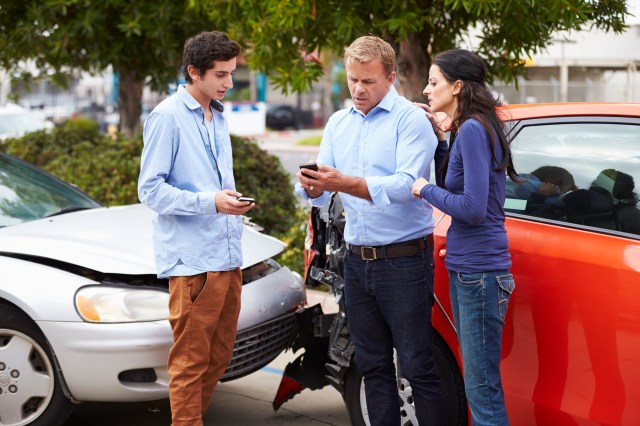More than 55,000 Utah drivers experienced auto accidents in 2013. These accidents led to over 16,000 injuries and 202 deaths. Most drivers don’t know what steps to take right after a collision. This lack of knowledge can hurt their chances of physical recovery and legal protection.
Utah’s car accident laws matter because the state uses a no-fault insurance system. Drivers must carry Personal Injury Protection (PIP) coverage of at least $3,000. Your compensation claims depend on taking the right steps after an accident. These steps include calling the police and collecting witness information.
This piece guides you through what to do after a Utah traffic accident. You’ll learn how automobile accident laws work in your case and ways to protect your rights. We’ve created this FAQ to help you deal with the aftermath of various auto accidents in Utah, from rear-end collisions to left-hand turn accidents.
Essential First Steps After a Motor Vehicle Accident
Quick action after a car accident in Utah can affect your chances of getting fair compensation. Utah law outlines specific steps that make your case stronger.
Call the police and file a report
Your first step after making sure everyone is safe should be to call law enforcement. Utah law says you must report accidents that cause injury, death, or property damage over $2,500. A police report helps with insurance claims and legal cases, even for small accidents.
Police officers must submit an electronic accident report within 10 days after they complete their investigation. You should go to the nearest police station to file a report yourself if police can’t come to the scene. Not reporting an accident might lead to criminal charges and insurance companies denying your claims.
Gather witness and driver information
After ensuring safety, get complete information from everyone involved. You need names, addresses, phone numbers, driver’s license numbers, and insurance details from other drivers. Don’t forget to get contact information from anyone who saw the accident.
Witness statements are a great way to get an unbiased point of view about what happened. Ask them politely for their information and if they could give a statement later if needed.
Document the scene with photos and notes
Good documentation creates strong visual evidence for your case. Take multiple photos with your phone showing:
- Vehicle damage and positions
- Visible injuries
- Road conditions and traffic signals
- Skid marks or debris
- License plates and insurance cards
On top of that, write down detailed notes about the accident. Include time, date, location, weather conditions, and how you remember events. Keep records of every conversation with insurance representatives, police officers, or others involved.
Avoid statements that admit fault
Many people make the mistake of accidentally accepting blame after an accident. Simple phrases like “I’m sorry” could sound like you’re admitting fault. Insurance companies might use these words against you to deny your compensation.
Be direct when talking to others at the scene, but only share necessary information. Don’t guess about what caused the crash or share information that could be debunked later. Let your lawyer talk to insurance adjusters since they’re trained to reduce payouts.
Medical Care and Injury Documentation
Getting medical help right away after a Utah auto accident protects your health and gives you vital legal coverage. You should know how medical care helps your recovery and affects any compensation you might receive.
Why early treatment matters
You need to see a doctor right after an auto accident, even if you feel fine. Serious conditions like internal bleeding, concussions, and whiplash might not show symptoms until hours or days later. Quick medical checks create important records that link your injuries directly to the accident. Insurance adjusters don’t like delays. They might claim your injuries came from something else or weren’t serious enough to need immediate care. A minor discomfort today could become a long-term problem without proper care early on.
Tracking symptoms and follow-up care
Detailed records of all symptoms are a great way to get proper treatment and fair compensation. Write down your pain levels, movement problems, and how injuries affect your daily life. Make sure you go to all appointments and follow your treatment plan exactly. Insurance companies see missed appointments as proof that you’re not badly hurt. Get copies of your medical records and check them carefully. Any mistakes could hurt your claim. Remember to write down any new symptoms that show up weeks after your accident.
Handling gaps in medical treatment
Insurance companies examine treatment timelines closely. They often use gaps to reduce claim values. Delays between the accident and your original treatment or between follow-ups can hurt your compensation chances. Legal experts say insurance companies believe real injuries need consistent treatment. You might have good reasons for gaps like family emergencies or other illnesses. Still, keeping up with your treatment schedule gives your claim the best protection.
Using PIP benefits for initial costs
Utah law says every driver must have Personal Injury Protection (PIP) insurance with at least $3,000 for medical costs. This no-fault coverage applies whatever caused the accident. To get these benefits, call the insurer of the car you were in during the accident. Send them the police report, medical records, and bills. PIP usually pays your healthcare providers directly within 30 days after you submit the needed paperwork.
Navigating Utah Auto Insurance and Legal Rules
Utah’s auto accident laws come with specific insurance rules and deadlines. You need to know these rules to get fair compensation and protect your rights during the claims process.
Understanding Utah’s no-fault insurance rule
Utah uses a no-fault insurance system. Your own insurance covers your injuries at first, no matter who caused the accident. This setup helps you get your medical bills paid quickly and reduces lawsuits. You can still file a claim against the driver who hit you if your injuries are severe enough.
What is PIP and how does it work?
Every Utah driver must have Personal Injury Protection (PIP) coverage of at least $3,000. PIP pays your medical bills, lost wages (up to $250 weekly or 85% of income, whichever is less), and household services. Insurance companies must pay these benefits within 30 days after they get proof of your expenses. Your health insurance usually takes over once you hit the $3,000 medical expense limit.
Statute of limitations for auto accident claims
Utah law gives you four years from your accident date to file a personal injury lawsuit. The deadline changes to two years for wrongful death claims and three years for property damage. Missing these deadlines will cost you your right to compensation, even with serious injuries or clear fault.
When to hire Utah auto accident lawyers
You should talk to a lawyer if your injuries cost more than the $3,000 PIP limit, you have permanent injuries, or the insurance company denies fault. Lawyers become crucial in crashes with multiple vehicles, permanent disabilities, or low settlement offers. Getting legal help early helps preserve evidence and meet important deadlines.
Can you sue if partially at fault?
The answer is yes. Utah follows a modified comparative negligence rule with a 50% threshold. You can get compensation as long as you’re not more than 50% responsible for the crash. Your fault percentage reduces your compensation. For instance, in a case with $100,000 in damages – if you’re 20% at fault, you’d receive $80,000. However, even if you have insurance, someone could still potentially sue you, depending on the circumstances.
Building a Strong Case for Compensation
A successful compensation claim needs solid evidence after a Utah auto accident. Your case outcome depends on how well you document everything. This applies whether you’re dealing with insurance companies or going to court.
Collecting and preserving evidence
You should start preserving evidence right after the accident happens. Police reports are the life-blood of your claim because they provide an unbiased account and determine who’s at fault initially. Getting traffic citations at the scene can strongly indicate who’s liable. Physical evidence like skid marks, damage patterns, and debris helps show how the accident happened. Take plenty of photos of the vehicles, road conditions, traffic signs, and injuries. These provide visual proof that specialists can analyze to establish fault. Witness statements from independent sources can confirm your side of the story.
Avoiding social media mistakes
Your social media activity can hurt your auto accident claim badly. Insurance companies watch claimants’ online profiles to find contradicting evidence. Don’t post anything about the accident, your injuries, or how you’re recovering. Simple photos at social events can make it look like your injuries aren’t serious. You should also watch out for friend requests from strangers – insurance companies sometimes create fake profiles to see your private posts. Note that deleting posts won’t help because screenshots and cached versions still exist, and removing them can make you look dishonest.
How attorneys use depositions and expert witnesses
Depositions are significant to finding facts in auto accident cases. These are sworn testimonies recorded outside court. Utah auto accident lawyers will get you ready for your deposition by reviewing facts, evidence, and what you’ve said before. Listen to questions carefully during depositions. Don’t volunteer extra information and take your time answering. Expert witnesses make your case stronger with their specialized knowledge. Specialists break down the evidence to determine fault. Medical experts link the accident to your injuries, measure damages, and explain complex ideas to juries.
What to expect in a settlement or lawsuit
Auto accident claims usually end in settlements instead of trials. Your attorney will first put together detailed evidence and documentation for a demand package. Insurance companies look into the claim and often start with a low offer. Then comes negotiation, where your attorney fights for fair compensation. Your case goes to trial if settlement talks fail. Evidence collection and witness testimony become even more important then. Your attorney handles all insurance company communication to protect you from saying anything damaging.
Conclusion
Quick action and knowledge of state laws make all the difference after a car accident in Utah. Your safety comes first. Document the scene carefully. Get witness details and file a police report. Medical care should be your next priority. It protects your health and creates a clear link between the accident and your injuries.
Utah’s no-fault insurance system works differently from other states. Personal Injury Protection benefits cover you whatever the fault situation. Serious injuries let you step outside this system to get full compensation. The state’s four-year statute of limitations and modified comparative negligence rules substantially affect your chance to recover damages.
Strong evidence leads to better claim outcomes. You need complete documentation. Stay away from social media posts that could hurt your case. Working with qualified experts helps build a strong case for fair compensation. Most cases settle before trial, but good preparation helps maximize your recovery either way.
The steps you take right after an accident shape both your physical recovery and financial compensation. Your case might be a minor fender-bender or a serious collision. Protecting your rights needs constant alertness, proper documentation, and often professional legal help. This piece gives you the tools to handle what comes after a Utah auto accident. It helps protect your legal rights and financial future.








/socialsamosa/media/media_files/2zHb3sGz3BcGQQrVtOoh.png)
